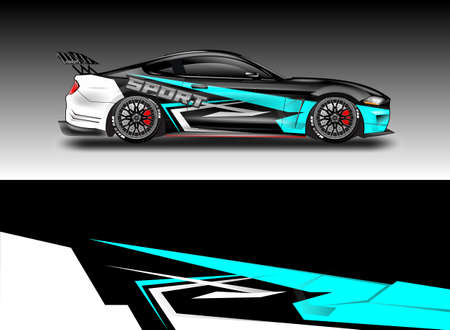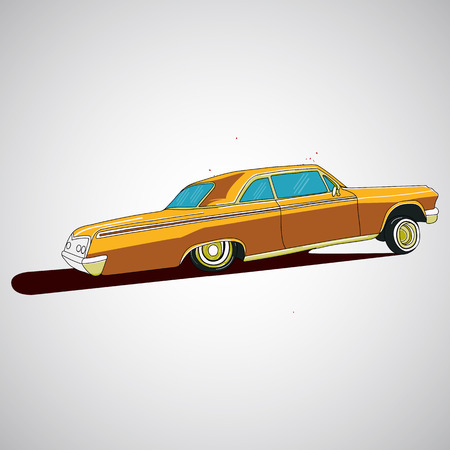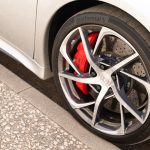1. Introduction to Downforce
When it comes to high-speed driving and racing, one of the critical factors affecting a vehicles performance is downforce. Downforce is the aerodynamic force that pushes a car toward the ground, increasing traction and stability. This force is generated by the shape and design of the vehicle’s body, as well as specific aerodynamic components like wings, diffusers, and splitters.
How Downforce Works
Downforce is created when air moves over and under the car’s body. By designing a car in a way that directs airflow efficiently, engineers can generate negative lift, pressing the vehicle more firmly onto the road. This effect improves grip, allowing the tires to maintain better contact with the surface, which is especially crucial during high-speed cornering and braking.
Why Is Downforce Important?
Downforce serves several critical functions in performance driving and motorsports:
| Function | Effect on Performance |
|---|---|
| Increased Traction | The extra downward pressure helps keep tires firmly planted on the road, reducing wheel slip. |
| Improved Cornering | Allows the car to take turns at higher speeds without losing control. |
| Better Braking | More grip means shorter stopping distances and improved stability under braking. |
Downforce in Racing vs. Street Cars
Downforce plays a significantly different role in racing cars compared to street-legal vehicles. Race cars are designed to generate massive amounts of downforce to maximize grip, often at the cost of top speed due to increased aerodynamic drag. In contrast, road cars strike a balance between aerodynamics, fuel efficiency, and everyday usability. Some high-performance sports cars incorporate active aerodynamics to adjust downforce levels dynamically, improving both stability and efficiency.
The Trade-off: Downforce vs. Drag
While downforce improves stability and cornering performance, it also comes with a downside: aerodynamic drag. More downforce generally means more air resistance, which can reduce a cars top speed and fuel efficiency. Engineers carefully design aerodynamic elements to find the perfect balance between maintaining high-speed stability and minimizing drag.
2. How Downforce Affects High-Speed Stability
Downforce is a crucial factor in a vehicles ability to stay stable at high speeds. By increasing the downward pressure on the car, downforce helps maintain traction, reduces unwanted lift, and enhances overall stability. Lets take a closer look at how this works.
Maintaining Traction
One of the primary benefits of downforce is improved traction. As speed increases, the amount of grip between the tires and the road can decrease due to aerodynamic forces. By pushing the car down, downforce increases the tire contact with the road, allowing for better acceleration, braking, and cornering performance.
Reducing Lift
Lift is the opposite of downforce and can be dangerous at high speeds. When air flows underneath the car and generates lift, it reduces stability and increases the risk of losing control. Effective aerodynamic designs, such as front splitters, rear wings, and underbody diffusers, help counteract lift and keep the car planted on the road.
Enhancing Vehicle Stability
At high speeds, a vehicle without proper downforce can become unpredictable, especially when maneuvering through corners or dealing with crosswinds. Downforce ensures that the car remains stable by preventing excessive body movement and reducing the chances of sliding or spinning out. This is why race cars and high-performance vehicles rely heavily on aerodynamic tuning.
Downforce Benefits Breakdown
| Benefit | How It Helps |
|---|---|
| Increased Traction | More grip allows for better acceleration and braking. |
| Reduced Lift | Prevents air from lifting the car, maintaining stability. |
| Improved Stability | Reduces body movement and enhances cornering control. |
Real-World Examples
In motorsports, teams spend countless hours optimizing a cars aerodynamics to maximize downforce. Formula 1 cars, for example, are designed with intricate wings and diffusers to ensure they remain glued to the track at speeds exceeding 200 mph. Similarly, supercars like the McLaren P1 or Porsche 911 GT3 use active aerodynamics to adjust downforce levels dynamically for better performance.
Conclusion
Understanding how downforce affects high-speed stability is essential for anyone interested in performance driving. By increasing traction, reducing lift, and enhancing stability, downforce plays a vital role in keeping cars safe and controllable at extreme speeds.

3. The Impact of Downforce on Cornering Performance
Downforce plays a crucial role in improving grip during cornering, allowing a vehicle to maintain higher speeds through turns while reducing the chances of understeer or oversteer. By increasing the pressure on the tires, downforce enhances traction, giving the driver more control over the vehicles handling.
How Downforce Improves Grip in Turns
When a car enters a corner at high speed, lateral forces push it outward. Without sufficient grip, the tires may lose contact with the road, leading to loss of control. Downforce counteracts this by pressing the car downward, increasing the friction between tires and the pavement. More grip means the car can take sharp turns without sliding out of control.
Impact on Understeer and Oversteer
Understeer and oversteer are common handling issues that downforce can help mitigate.
| Handling Issue | Effect | How Downforce Helps |
|---|---|---|
| Understeer (Front tires lose grip) | The car continues straight when trying to turn. | Front downforce increases grip on front tires, improving turn-in response. |
| Oversteer (Rear tires lose grip) | The rear of the car slides out, causing instability. | Rear downforce provides more traction to prevent the back from breaking loose. |
Maximizing Cornering Speeds
Racing cars and high-performance vehicles use aerodynamic elements such as wings, splitters, and diffusers to optimize downforce. By balancing front and rear downforce, engineers enhance stability, allowing the driver to maintain speed through turns without losing control. The result is faster lap times and improved overall performance.
4. Aerodynamic Components That Generate Downforce
Downforce plays a crucial role in maintaining grip and stability at high speeds. Various aerodynamic components work together to generate and optimize this force, allowing race cars and high-performance vehicles to stay planted on the road. Below, we’ll examine the key elements responsible for creating downforce.
Wings and Spoilers
Wings and spoilers are among the most recognizable aerodynamic components. They help push the car downward, improving traction and stability.
Rear Wing
The rear wing is designed to create a downward force, helping to keep the car’s rear wheels firmly on the ground. By adjusting its angle, engineers can fine-tune the balance between downforce and aerodynamic drag.
Front Wing
In race cars, the front wing is crucial for maintaining grip on the front tires. It directs airflow around the vehicle, optimizing both stability and cornering performance.
Diffusers
A rear diffuser works by accelerating airflow underneath the car, creating a low-pressure zone that pulls the car downward. This enhances traction without generating excessive drag.
Splitters
Splitters are flat aerodynamic panels attached to the front of the car. They help direct airflow away from the underside of the vehicle, increasing pressure on the top surface and generating additional downforce.
Underbody Aerodynamics
Optimizing underbody airflow is a key strategy for enhancing downforce efficiently. Engineers design smooth undertrays and use venturi tunnels to manipulate air movement beneath the car.
Comparison of Key Aerodynamic Components
| Component | Function | Impact on Downforce | Common Usage |
|---|---|---|---|
| Rear Wing | Directs airflow to generate downward pressure | High | Race cars, sports cars |
| Front Wing | Improves downforce on the front wheels | Moderate to High | Formula cars, high-performance vehicles |
| Diffuser | Enhances underbody airflow for additional downforce | Moderate | Race cars, performance sedans |
| Splitter | Controls airflow at the vehicle’s front end | Moderate | Track cars, sports cars |
| Underbody Aero | Optimizes airflow beneath the car | Significant | High-performance road and race cars |
Optimizing Downforce for Performance
Balancing downforce and drag is essential for maximizing performance. Too much downforce can create unnecessary drag, reducing top speed, while too little can lead to instability. Engineers carefully design and adjust these aerodynamic elements to achieve the best possible combination for different track conditions and vehicle setups.
5. Balancing Downforce and Drag
When designing a high-performance vehicle, engineers must strike a balance between generating enough downforce for stability while minimizing aerodynamic drag to maximize top speed. This trade-off is crucial in motorsports, supercars, and even some high-speed road cars.
Understanding the Trade-Off
Downforce increases grip, allowing a car to corner faster and remain stable at high speeds. However, creating downforce generally comes with increased aerodynamic drag, which reduces top speed. Engineers must carefully tune aerodynamic components to achieve an optimal balance based on the vehicle’s purpose.
How Engineers Manage Downforce and Drag
Different vehicles require different downforce-to-drag ratios. Here’s how engineers approach the balance:
| Vehicle Type | Downforce Priority | Drag Consideration |
|---|---|---|
| Formula 1 Car | Maximum downforce for cornering speed | Drag is accepted as a trade-off since high cornering speeds are crucial |
| Le Mans Prototype | Balanced downforce for speed and endurance | Moderate drag reduction for high straight-line speeds |
| Supercars | Downforce for road stability | Efficient aerodynamics to keep high top speed |
| Hypercars | Active aerodynamics for adaptable downforce | Variable drag reduction depending on driving conditions |
Adjustable and Active Aerodynamics
Modern high-performance cars use adjustable or active aerodynamics to optimize this balance dynamically. Rear wings, diffusers, and underbody airflow components can adjust based on speed and driving mode. For example:
- Retractable rear wings: Deploy at high speeds for stability, retract at low speeds to reduce drag.
- Active front splitters: Adjust to manage airflow and improve turning grip.
- Drag reduction systems (DRS): Used in motorsports to temporarily lower drag on straights.
Wind Tunnel and Computational Fluid Dynamics (CFD) Testing
Engineers use wind tunnel testing and CFD simulations to refine aero components. These tools help fine-tune elements like wing angles, diffusers, and ground effects to maximize efficiency without adding unnecessary drag.
By carefully balancing downforce and drag, engineers can tailor vehicles for different conditions, whether it’s maximizing speed on a straight or improving cornering grip on a twisty track.


